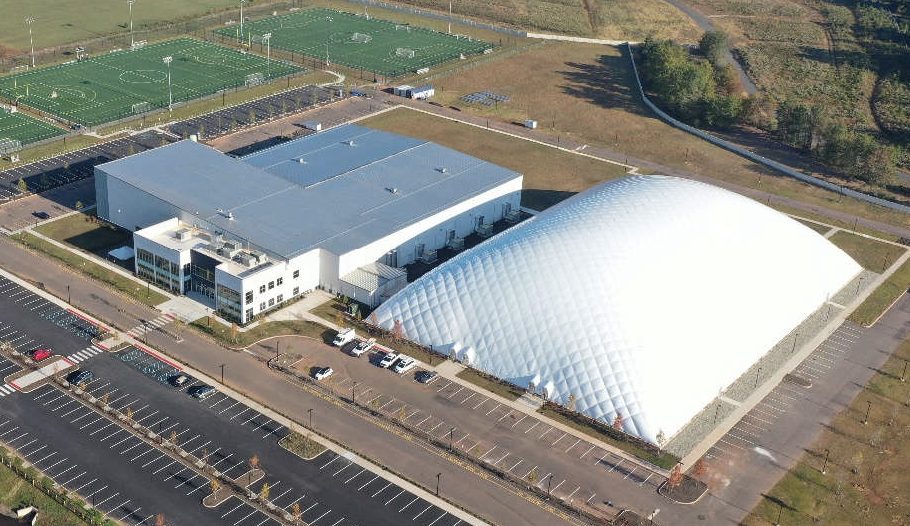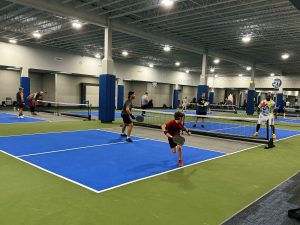An exciting new era of sports facility design is upon us. The emergence of new technologies, paradigm shifts in how we enjoy sporting events, and the realization that we all enjoy sports differently drive a new set of trends that will impact venues for years to come. Below are four sports facility design trends that our venue planning experts are seeing.
Create a legacy in your community
Versatile Spaces
We all know that basketball court is not just for basketball. It’s for volleyball, conventions, and, possibly, prom. To accomplish this previously meant that your facility had to be a fieldhouse that wasn’t customized for any particular activity. Innovations such as overhead systems for volleyball nets allow for a more seamless transition between activities. It also maximizes equipment storage.
We are seeing versatility in space usage in outdoor sports venues as well. Rather than developing specialized facilities, multipurpose fields are emerging throughout the country. Fields such as the ones at the Hoover Met Complex are built with field dimensions that allow operators to host football and lacrosse events and then reconfigure it to fit a baseball diamond.
Another great example of venue adaptability can be seen at the Community First Champion Center which features a modular pod system. The primary pod converts from courts to ice, depending on the season.
Interactive Kiosks
The concept is simple, yet powerful. Small booths or structures are being placed throughout the common areas of sports, events, and recreational facilities. Traditionally, these areas served as information booths and were manned by staff. New innovations are not only making the information provided in these areas more dynamic and easy to manage, they are creating branding and sponsorship activation opportunities as well.
At Cedar Point Sports Center, a digital wayfinding kiosk helps guests find their court amongst 145,000 square feet of sports and entertainment space. It features QR codes that, when scanned, direct you to your precise location in the venue.
At AT&T Stadium, home of the Dallas Cowboys, interactive kiosks help fans connect with their favorite football players. At “selfie stations” in the venue, guests can push a couple of buttons and have stars like Dak Prescott and Ezekiel Elliott pop into their pictures for a unique and fun selfie.
Experiential Amenities
The trend of sports venues providing more for guests than competition will continue to emerge as amenities such as family entertainment centers, climbing walls, and ninja courses become a part of sports facility design. Iron Peak Sports & Events in Hillsborough, NJ and Highland Sports Complex in Wheeling, WV both considered the athlete’s family members in their design. While doing so creates a more comprehensive guest experience, it also makes sense from a financial standpoint. These amenities not only create revenue opportunities beyond facility rentals and event registrations, but it also attracts the local community by providing them with a fun activity at the venue.
While FEC’s are an emerging amenity among youth sports facilities, professional sports venues have also developed innovative ways to keep fans engaged as well. One the most popular ones is the “Viking Village located on the Upper Club level of U.S. Bank Stadium, home of the Minnesota Vikings. The interactive space includes several skills modules including virtual pass and catch drills, tackling sleds, and three cone running exercises, as well as an “on the field” experience.
Venue Inclusivity
More and more venues are considering not only the experiences of all guests, but their needs as well. Inclusivity is becoming a strong consideration in sports facility design and, if done correctly, goes well beyond simply meeting Americans with Disabilities Act (ADA) standards (although that is important too). Some examples of this include providing nursing rooms for moms with infants, gender-neutral restrooms, and sensory-inclusive areas like the ones found at Rocky Mount Event Center (RMEC) in Rocky Mount, NC. RMEC teamed with Kulture City to create a sensory inclusive environment. This includes “quiet areas” in which people can go if they have a sensory need.
For more information on sports facility design, venue planning, or if it’s time to launch a legacy-building project, call or contact us at 727-474-3845.






